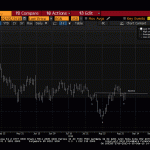
The Bank of Japan surprised investors last week by introducing negative interest rates. At the World Economic Forum in Davos a couple weeks ago, BOJ Governor Kuroda appeared to deny that such a move was under consideration. The market’s focus, like ours, was on the pace by which it was expanding its balance sheet (JPY80 trillion a year). The FAQ format may be the most effective way to explain what the BOJ did, why and the implications for investors.
What did the Bank of Japan do?
At the conclusion of its two-day meeting, on January 29, the BOJ decided by a 5-4 vote to introduce a three-tiered reserve system that includes a negative rate for some reserves?
What are the three tiers?
There is currently about JPY250 trillion held by the BOJ. The first tier, called the Basic Balance, is the existing level of reserves at the central bank (average current balance last year). The Basic Balance accounts for the vast majority of reserves, accounting roughly for JPY210 trillion and will continue to earn 10 bp annualized. The second tier is called the Macro Add-on Balance. This includes required (as opposed to excess reserves), and funds borrowed from BOJ under a number of its existing lending programs. There will not be interest earned or paid on the Macro Add-on Balance, which accounts for about JPY9 trillion of reserves. It is only the third tier (Policy-Rate Balance) that will be charged 10 bp by the BOJ. It will include new excess reserves created by the BOJ asset purchase program; it calls Qualitative and Quantitative Easing (QQE). The BOJ projects Policy-Rate Balance to amount to JPY10-JPY30 trillion.
Have other countries introduced a tiered system?
Several central banks have now adopted some form of negative rates. They include the European Central Bank, the Swiss National Bank, the Danish National Bank, and Sweden’s Riksbank. Outside of the ECB, the others have a tiered reserve system. The BOJ’s version seems to apply negative rates to the smallest subset of reserves. There had been rumors in November that the ECB could adopt a tiered approach in December. While this did not materialize, it could in March.












Leave A Comment